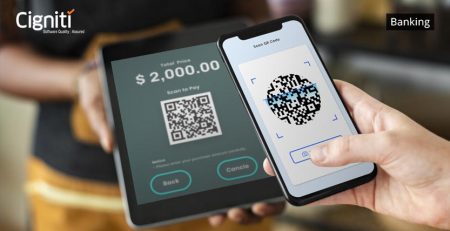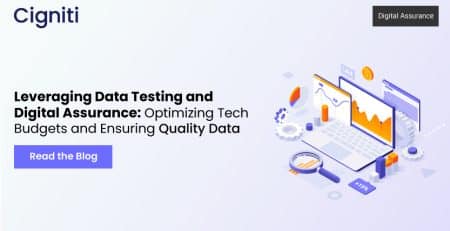Delivering Customer Delight with Digital Assurance
Digitalization is the result of technologically induced changes in business cycles. It motivates a company to perform business better, faster, and cheaper by putting it ahead of its competitors.
Customers aren’t expecting to be wowed but simply want a streamlined experience that can be had at any time with a quick and seamless response. Needless to say, they want an experience that is simple, personalized, linked, and consistent.
It’s impossible to overestimate the importance of focusing on your customers’ journey. When done correctly, it may make your marketing feel more like matchmaking and help you establish a long-term relationship with your clients.
You can’t influence customers if you don’t grasp the customer journey and analyze how, why, when, and where they interact with your business. This is especially true for today’s digital customers; you will ultimately fail miserably to fulfil their changing needs. Customers’ tolerance for firms that get their interaction tactics wrong is expanding thanks to digital and social media.
For organizations who want to provide a fantastic customer experience, digital transformation is no longer an option. It is a requirement that is aided by quality assurance procedures. In a device-agnostic, omnichannel world, digital assurance is paving the way for businesses to create pleasant consumer experiences. Enterprises are engaging their customers and speeding up product deliveries across devices and platforms using digital assurance.
In terms of quality engineering practice, digital assurance is a huge step forward. Its use is increasing at a breakneck pace, with a CAGR of 12.9 percent expected by 2026. Customer delight and optimum performance are the ultimate goals of digital assurance. Digital assurance is made even more effective by DevOps, AI, and automation.
With digital assurance, a holistic strategy and the correct framework enhance value delivery. DevOps, automation, and testing are the metrics for successful digital assurance today. The security of data, the performance of products, and the consumer experience are all intertwined. The functionality, performance, and security of several parameters are all tested. In digital assurance, testing of applications, APIs, analytics, big data, and disaster recovery takes center stage. What’s the result? Value delivery is accelerated, and performance is at its pinnacle.
Digital assurance, on the other hand, is not a one-time task. It is an ongoing process that is integrated with wider business objectives. Smart and automated testing is the future of digital assurance, and the technique is rapidly evolving as new technologies enter the ecosystem. There is one thing that is certain. Only a constant focus on digital assurance can help enterprises reap the true benefits of digital transformations as the business landscape shifts toward omnichannel, device and platform agnostic 4IR models. In today’s digitally empowered business world, organizations can now maintain and sustain the rate of change.
When customers interact with a company in the digital age, they demand hyper-personalized user experiences, including high-value communication across many channels and devices. Customers have become much more savvy, agile, independent, and complex in terms of what they seek to help them make purchasing decisions, and their behaviors have become increasingly unpredictable and difficult to predict – in contrast, marketers’ traditional approach to defining their target audience, planning, and executing campaigns is struggling to keep up. The true, personal journey of self-improvement of a customer is continuous throughout his or her life.
For years, the importance of understanding the customer journey via your product and service experience has been lauded as a critical component of marketing. Companies who fail to solve the riddle of the customer journey will be unable to strengthen their client relationships.
The word “customer journey” is undoubtedly too high-level, general, and prescriptive in today’s data-rich world. It is deemed to be “broken” since it is incomplete and rarely actionable. As a result, the focus of tomorrow’s marketers must be less linear, segmented, and personal.
Delivering a consistent experience across the customer lifecycle may strengthen a brand’s relationship with its customers, but it necessitates a large quantity of data and a detailed understanding of the customer journey.
Customers will have a positive experience with the digital solutions and services. In digital assurance, time is an important factor, and organizations aspire to produce high-quality products much faster than before. As a result, businesses make the switch to the correct automation systems, which is seen as a vital aspect of their success. Digital transformation activities have resulted in a dramatic shift in how high-quality assurance is now carried out.
Automation, performance monitoring, and security problems are all part of digital assurance. It also enables the speed of delivery that digital enterprises seek in an ever-changing environment. Digital Assurance keeps track of the flaws in traditional approaches and focuses on consumer issues.
However, the modern shift has prompted businesses to test software programs with digital assurance employing user experience due to growing customer demand and expectations.
Traditional QA approaches focus only on validating existing software applications rather than improving the customer experience. Shifting to Digital Assurance will automate the process and deliver a real-time answer, addressing this shortcoming while also speeding up the digital testing process. Digital QA employs artificial intelligence (AI) and robotics to automate a variety of tasks with accuracy and speed that go beyond traditional testing.
Organizations, marketers, entrepreneurs, and companies all appreciate brand value. Digital assurance improves brand loyalty, keeps employees engaged, and reduces financing costs. It assists businesses in establishing and maintaining a culture that promotes high-quality products and services. A solid digital assurance system detects and eliminates flaws and errors early in the development process, increasing brand value.
Security is extremely important, especially in today’s interdependent environment. Revolutionary ecosystems and smart devices have opened a whole new universe of possibilities. On the other hand, if not properly configured and tested, it leaves the entire system exposed to security attacks.
As a result, a transition to Digital QA functions as an adversary in this scenario, providing protection to all the customer’s digital assets by proactively predicting, preventing, and detecting errors to provide continuous supervision and uncover any security vulnerabilities.
It’s tricky to provide a better client experience while utilizing a variety of digital ecosystem components. As a company grows more technologically mature, it becomes increasingly challenging to ensure that each aspect performs at its best, resulting in consumer satisfaction. Organizations may increase project efficiency and ensure that projects are delivered on time by using predictive analysis.
When any new technology is implemented, digital assurance validates the performance that is critical. It provides a well-defined prediction and performance methodology, as well as validations, that are in sync with the development cycle and aid in the growth of the business.
By optimizing profits based on better customer experience assurance, Digital Assurance can help firms realize the return on investment (ROI) of their digital spend. Digital assurance assures that a company’s adopted digital services are relevant to its growth and will generate a stronger ROI over time.
Organizations must establish digital assurance procedures and select a dependable service provider that can address all the dimensions. While assuring quality and scalability, a strong digital assurance strategy will assist an organization in reducing time to market, improving quality, speed, and ROI.
Conclusion
Organizations are being compelled to reinvent business models, goods and services, client segments, channels, business processes, and workplaces because of digital forces. Assuring the digital landscape is no easy task: consumer demands necessitate a fundamental shift away from traditional quality assurance, testing infrastructure, and models and toward an integrated digital assurance strategy in order to fully harness the power of digital forces, achieve business objectives, and ensure customer loyalty.
Cigniti’s Digital Assurance services are backed by world-class solutions, intellectual property, products, vendors, and testing infrastructure, all of which are overseen by competent specialists. Our services take advantage of the combined strength of digital forces:
- On-demand, comprehensive cloud assurance
- AI-powered assurance analytics solution
- IoT system testing using a context-aware test bench
- Ensure a great user experience across many channels, devices, and platforms with omnichannel assurance.
- Data analytics assurance to use Big Data to generate and improve client engagement
- Beyond functional testing (performance, security, compatibility, accessibility), network and service virtualization, mobile testing strategy, test lab setup, user experience, test automation, and testing as a service
- Functional, automated, and performance testing of Big Data on Hadoop platform
Need help? Talk to our Digital Assurance experts to learn more about delivering customer delight with digital assurance.





Leave a Reply